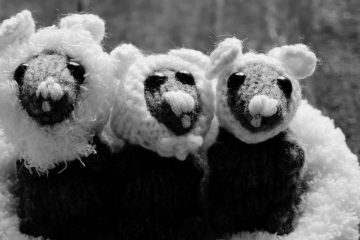What Happened On August 3rd?
On August 3, 1946, Santa Claus Land, the world’s first theme park, opened in Santa Claus, Indiana. Visitors from near and far gathered to witness this unprecedented event. The gates, decorated with festive symbols, welcomed families into a year-round Christmas paradise.
The park came alive with holiday music, the aroma of fresh-baked cookies, and festive decorations. Santa Claus greeted children, listened to their wishes, and posed for photos. The miniature train, the Santa Claus Land Railroad, offered scenic rides around the park. A small roller coaster, the “Santa Claus Sleigh Ride,” provided thrills, while live shows with elves and reindeer dancers added to the magic.
Louis J. Koch, the park’s founder, personally welcomed many visitors, sharing his vision of a place where the Christmas spirit could thrive year-round. His dedication was evident in every detail, from handcrafted wooden toys to the intricately designed winter wonderland setting.
The Vision Behind The Wonderland
Koch, motivated by the disappointment of children who found no Santa in Santa Claus, Indiana, bought a large plot of land to build Santa Claus Land. He wanted to create a place that offered continuous Christmas joy with a toy shop, rides, live shows, and a post office where children could send letters to Santa.
Koch funded the entire project himself despite the economic challenges of the post-World War II era. He insisted on high-quality attractions and authentic decorations, even collaborating with local craftsmen to create custom-made elements for the park. His passion for creating a magical experience was evident in the park’s attention to detail.
Koch’s son Bill Koch joined the project early on, helping his father navigate the complexities of park management and expansion. Together, they developed new attractions and areas within the park, ensuring it remained a fresh and exciting destination for returning visitors.
Santa Claus Land introduced the concept of a theme park, where visitors could immerse themselves in a unified, fantastical environment. Unlike traditional amusement parks, it offered a cohesive experience centered around a single theme. This idea set a new standard for the industry and influenced future theme parks.
The park’s layout encouraged family exploration, with attractions designed for all ages. This focus on family-friendly fun became a hallmark of theme parks, providing a blueprint for others. The design included innovative features like dedicated children’s areas and parent lounges, emphasizing the importance of family togetherness.
Inspiring Future Icons
The success of Santa Claus Land caught the attention of Walt Disney, who visited the park and drew inspiration for Disneyland. Disney expanded on Koch’s concept, creating a park with multiple themed lands, each offering unique experiences. Disneyland featured Adventureland, Tomorrowland, and Fantasyland, areas that provided diverse entertainment while maintaining a cohesive thematic experience.
Legoland, which opened its first park in Billund, Denmark, in 1968, also adopted the idea of themed environments. It featured areas dedicated to different aspects of the Lego brand, emphasizing creativity and family engagement, principles that echoed Santa Claus Land’s foundational concepts.
Innovative Elements
Santa Claus Land pioneered several theme park innovations. It introduced themed dining experiences, with restaurants serving holiday-themed meals like turkey with all the trimmings. This attention to detail enhanced the immersive experience and became a model for future parks.
The park offered educational programs, partnering with local schools for field trips that included lessons on Christmas traditions and toy-making workshops. These programs enriched the park’s offerings, highlighting Koch’s commitment to creating a place of wonder and learning.
Seasonal events kept visitors returning throughout the year. Halloween and Thanksgiving-themed celebrations extended the park’s appeal beyond Christmas, increasing visitor numbers and revenue.
Koch’s vision for Santa Claus Land extended to the park’s innovative use of technology. For instance, the park featured one of the earliest instances of synchronized music and lighting in its live shows, creating a fully immersive experience for visitors. This technology-driven approach to entertainment influenced future theme parks to integrate advanced technology into their attractions.
Santa Claus Land also boosted the local economy, establishing Santa Claus, Indiana, as a holiday destination. The park’s success led to the growth of other Christmas-themed businesses and attractions, solidifying the town’s identity as “America’s Christmas Hometown.”

Another lesser-known fact about Santa Claus Land is that it featured one of the earliest instances of interactive attractions. The park included a Santa’s Workshop area where children could participate in toy-making activities, giving them a hands-on experience that deepened their engagement and enjoyment. This concept of interactive attractions became a staple in theme parks worldwide.
In addition, Santa Claus Land pioneered the idea of themed merchandise. The gift shops sold unique, park-exclusive items such as handcrafted Christmas ornaments and personalized stockings, which became cherished souvenirs for visitors and added to the park’s distinctive charm.
Santa Claus Land’s success can also be attributed to its commitment to guest satisfaction. The park implemented an early version of guest feedback mechanisms, encouraging visitors to share their experiences and suggestions. This proactive approach allowed the park to continually improve and adapt to the needs and desires of its guests.





